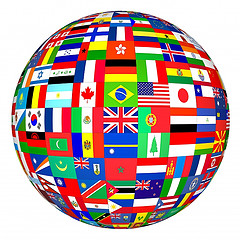Wiki стаття
 What is Cultural Awareness, anyway? How do I build it?
What is Cultural Awareness, anyway? How do I build it?
“A fish only discovers its need for water when it is no longer in it.
Our own culture is like water for the fish. It sustains us.
We live and breathe through it.”
by Stephanie Quappe and Giovanna Cantatore
Cultural Awareness is the foundation of communication and it involves the ability of standing back from ourselves and becoming aware of our cultural values, beliefs and perceptions. Why do we do things in that way? How do we see the world? Why do we react in that particular way?
Cultural awareness becomes central when we have to interact with people from other cultures. People see, interpret and evaluate things in a different ways. What is considered an appropriate behavior in one culture is frequently inappropriate in another one. Misunderstandings arise when I use my meanings to make sense of your reality.
As an Italian it is almost automatic to perceive US Americans as people who always work, talk about business over lunch and drink their coffee running in the street instead of enjoying it in a bar. What does it mean? Italians are lazy and American hyperactive? No, it means that the meaning that people give to certain activities, like having lunch or dinner could be different according to certain cultures. In Italy, where relationships are highly valued, lunch, dinner or the simple pauses for coffee have a social connotation: people get together to talk and relax, and to get to know each other better. In the USA, where time is money, lunches can be part of closing a deal where people discuss the outcomes and sign a contract over coffee.
Misinterpretations occur primarily when we lack awareness of our own behavioral rules and project them on others. In absence of better knowledge we tend to assume, instead of finding out what a behavior means to the person involved, e.g. a straight look into your face is regarded as disrespectful in Japan.
Becoming aware of our cultural dynamics is a difficult task because culture is not conscious to us. Since we are born we have learned to see and do things at an unconscious level. Our experiences, our values and our cultural background lead us to see and do things in a certain way. Sometimes we have to step outside of our cultural boundaries in order to realize the impact that our culture has on our behavior. It is very helpful to gather feedback from foreign colleagues on our behavior to get more clarity on our cultural traits.
Projected similarities could lead to misinterpretation as well. When we assume that people are similar to us, we might incur the risk that they are not. If we project similarities where there are not, we might act inappropriately. It is safer to assume differences until similarity is proven.[1]
Degrees of Cultural Awa reness
There are several levels of cultural awareness that reflect how people grow to perceive cultural differences.
My way is the only way - At the first level, people are aware of their way of doing things, and their way is the only way. At this stage, they ignore the impact of cultural differences. (Parochial stage)
I know their way, but my way is better - At the second level, people are aware of other ways of doing things, but still consider their way as the best one. In this stage, cultural differences are perceived as source of problems and people tend to ignore them or reduce their significance. (Ethnocentric stage)
My Way and Their Way - At this level people are aware of their own way of doing things and others’ ways of doing things, and they chose the best way according to the situation. At this stage people realize that cultural differences can lead both to problems and benefits and are willing to use cultural diversity to create new solutions and alternatives. (Synergistic stage)
Our Way - This fourth and final stage brings people from different cultural background together for the creation of a culture of shared meanings. People dialogue repeatedly with others, create new meanings, new rules to meet the needs of a particular situation. (Participatory Third culture stage)
Increasing cultural awareness means to see both the positive and negative aspects of cultural differences. Cultural diversity could be a source of problems, in particular when the organization needs people to think or act in a similar way. Diversity increases the level of complexity and confusion and makes agreement difficult to reach. On the other hand, cultural diversity becomes an advantage when the organization expands its solutions and its sense of identity, and begins to take different approaches to problem solving. Diversity in this case creates valuable new skills and behaviors.
In becoming culturally aware, people realize that: We are not all the same
Similarities and differences are both important
There are multiple ways to reach the same goal and to live life
The best way depends on the cultural contingency. Each situation is different and may require a different solution.